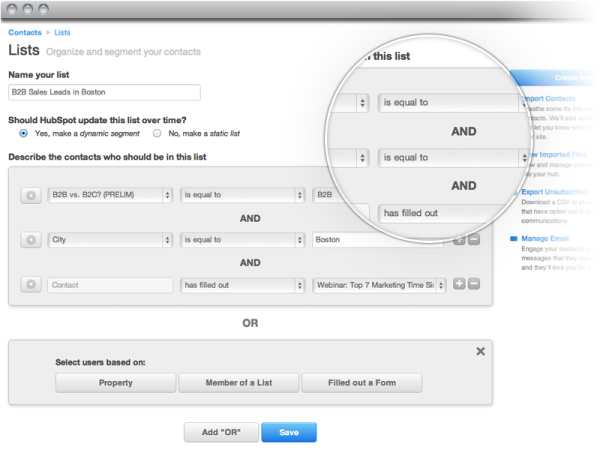
Marketing automation is a great way for SMB companies to generate leads and position their businesses as thought leaders in their vertical markets. There are many affordable marketing automation software packages available for small businesses. We recommend HubSpot, but there are several other alternatives available for small businesses like SharpSpring, Act-On and GreenRope.
Marketing automation is becoming ubiquitous for small businesses in most industries. The results you generate from marketing automation are dependent on the skill with which you apply it to your marketing. Here are 4 marketing automation best practices for SMBs that will improve your business results.
1. Use marketing automation to qualify leads
One thing that most SMBs have in common is that they have limited sales resources. Most SMB owners play a major role in their company's sales efforts. They also manage customer relationships and play large roles in business operations, finance and human resources. They don't have unlimited time to chase down every potential sales lead that their marketing automation process generates. SMBs that have dedicated sales professionals also have to focus on the leads that are most likely to close.
Companies with efficient sales processes use their marketing automation software to perform a first-cut qualification of inbound leads. Marketing automation software can be configured to identify leads that meet your ideal customer profile description. An ideal customer profile is a demographic description of the types of companies you target in your sales process. Most companies target niches based on demographic factors like industry, company size and/or geographic location.
These leads that have passed the first round of automated qualification are called marketing qualified leads. Marketing qualified leads are then passed to sales for review. The sales person reviews social media, company information on the internet and other lead intelligence to determine whether the lead is worth pursuing (a sales qualified lead) or not.
2. Use marketing automation to segment your leads
The inbound lead generation process generates different types of leads. An entry-level professional and a CEO might download the same content offer. The leads you generate will have different professional functions, be from different industries and different size companies.
Clearly, an email targeted to the CEOs unique needs and interests will be better received than one written to appeal to the CEO and the entry-level professional. When properly configured, your marketing automation software can segment your leads so that you can deliver them highly-targeted content based on their individual needs and interests.
Here is a sample segmentation list in HubSpot.

3. Use marketing automation for lead intelligence
Leads generated with inbound marketing can be in various stages of their buying processes. They can be developing an awareness of the problem or opportunity they face, they can be evaluating different ways to solve the problem or take advantage of the opportunity or they could be in an active decision-making process.
Marketing automation can give you insight into where an individual lead is in their buying process. Good marketing automation software can tell you things like:
- what pages the lead has viewed on your website
- which content offers they have downloaded
- whether they have opened and/or clicked on links in the emails you have sent them
- what they are saying on social media
All of this information can help you prepare for live conversations with prospects. Be careful - confirm your assumptions with the prospects by asking questions to make sure your assumptions are correct.
4. Test your automation processes
Before taking any of your marketing automation processes live, test them to make sure they are doing what you want them to do. There's nothing worse than clicking on a link and being directed to a 404 page (this page doesn't exist.) Likewise, you don't want to send your CEO emails to your entry-level leads.
This is something that many SMBs overlook. You may have a mistake in your marketing automation configuration that you will never know about ("Why am I not gettting any leads from my new eBook?") It could be because you've linked your call-to-action directly to your content delivery page - the lead will get the eBook without completing your lead generation form.
Use peer review (a second set of eyes) to make sure your marketing automation processes are configured properly.
Are you using marketing automation in your business? If you're not, you are probably losing leads to your competitors that are using it. If you'd like to learn how marketing automation can improve your business, schedule a free consultation with us.







